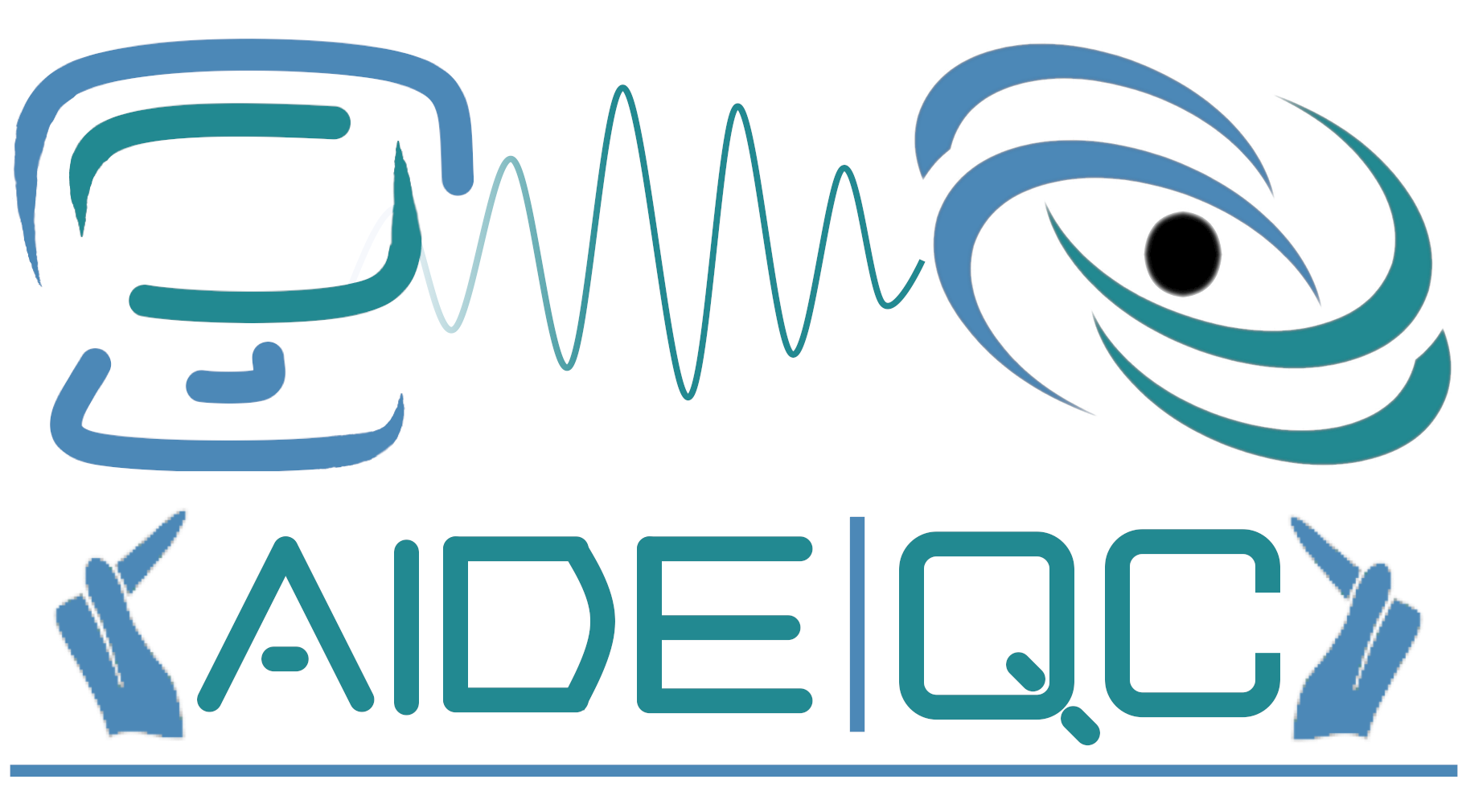Add a New Circuit Synthesis Strategy
Here we describe how developers can extend the AIDE-QC stack with support for a new circuit synthesis strategy.
We define circuit synthesis at the black-box level: a unitary matrix goes in and a list of one and two
qubit gates come out.
Background ¶
To understand the class architecture for circuit synthesis strategies, it is important to understand the
internal intermediate representation that AIDE-QC leverages for compiled quantum kernels. AIDE-QC builds upon
the XACC intermediate representation, which exposes Instruction and CompositeInstruction abstract classes that
are intended for subclassing for concrete instruction types and collections of concrete instructions. The IR model
puts forward a collection of default Instruction sub-types for common quantum gates, and a Circuit sub-class forCompositeInstruction that models a quantum circuit (collection of gates). Pertinent methods on the Circuit (inherited fromCompositeInstruction) consist of addInstruction, replaceInstruction, insertInstruction, getInstructions, and expand. These are
all pretty self-explanatory, but expand requires a bit of a description of its functionality, as it is critical
to circuit synthesis in the AIDE-QC stack. This method has signature bool expand(options : HeterogeneousMap).
The options HeterogeneousMap is a data structure that maps string keys to values of any type. The goal ofexpand is to take as input this options map, and use the information contained within it to constructthis (or self in the Python jargon) CompositeInstruction, return true on success and false on an error.
Therefore, to inject a new circuit synthesis strategy into the stack, one simply implements a new Circuit sub-type with
a valid and strategy-specific implementation of expand. Of note - the compiler stack will always pass the unitary
key with corresponding Eigen::MatrixXcd value for circuit synthesis strategies coming from the use of decompose {}(...) in
C++ or with decompose(...) as mat_var: in Python.
Create Custom Circuit Synthesis Plugin ¶
We start by creating a directory and the necessary files for the creation of a new circuit synthesis plugin
mkdir my_circ_synth && cd my_circ_synth
touch CMakeLists.txt manifest.json my_circ_synth.{hpp,cpp}
The plugin must define a manifest.json file to encode information about the plugin name and description. We populate the file with the following
{
"bundle.symbolic_name" : "my_circ_synth",
"bundle.activator" : true,
"bundle.name" : "My Cool Circuit Synthesis Method",
"bundle.description" : "Cool Description Here."
}
Now we populate the CMakeLists.txt file with typical CMake boilerplate project calls, plus additional code to correctly build our plugin and install to the appropriate plugin folder location:
# Boilerplate CMake calls to setup the project
cmake_minimum_required(VERSION 3.12 FATAL_ERROR)
project(my_circ_synth VERSION 1.0.0 LANGUAGES CXX)
set(CMAKE_STANDARD_REQUIRED ON)
set(CMAKE_CXX_STANDARD 17)
set(CMAKE_EXPORT_COMPILE_COMMANDS TRUE)
# Find XACC, provides underlying plugin system
find_package(XACC REQUIRED)
set(LIBRARY_NAME my-circ-synth)
file(GLOB SRC my_circ_synth.cpp)
usfunctiongetresourcesource(TARGET ${LIBRARY_NAME} OUT SRC)
usfunctiongeneratebundleinit(TARGET ${LIBRARY_NAME} OUT SRC)
add_library(${LIBRARY_NAME} SHARED ${SRC})
target_include_directories(${LIBRARY_NAME} PUBLIC .
LBFGSpp/include
${XACC_ROOT}/include/eigen)
# _bundle_name must be == manifest.json bundle.symbolic_name !!!
set(_bundle_name my_circ_synth)
set_target_properties(${LIBRARY_NAME}
PROPERTIES COMPILE_DEFINITIONS
US_BUNDLE_NAME=${_bundle_name}
US_BUNDLE_NAME ${_bundle_name})
usfunctionembedresources(TARGET ${LIBRARY_NAME}
WORKING_DIRECTORY ${CMAKE_CURRENT_SOURCE_DIR}
FILES manifest.json)
# Link library with XACC
target_link_libraries(${LIBRARY_NAME} PUBLIC xacc::xacc)
# Configure RPATH
if(APPLE)
set_target_properties(${LIBRARY_NAME} PROPERTIES INSTALL_RPATH
"${XACC_ROOT}/lib")
set_target_properties(${LIBRARY_NAME} PROPERTIES LINK_FLAGS
"-undefined dynamic_lookup")
else()
set_target_properties(${LIBRARY_NAME} PROPERTIES INSTALL_RPATH
"${XACC_ROOT}/lib")
set_target_properties(${LIBRARY_NAME} PROPERTIES LINK_FLAGS "-shared")
endif()
# Install to Plugins directory
install(TARGETS ${LIBRARY_NAME} DESTINATION ${XACC_ROOT}/plugins)
The above CMake code is pretty much ubiquitous across all XACC plugin builds. The first crucial part is find_package(XACC) which can be configured or customized with the cmake .. -DXACC_DIR=/path/to/xacc flag. Next we create a shared library containing the compiled my_circ_synth code, and configure it as a plugin with appropriate usfunction* calls (from the underlying CppMicroServices infrastructure). We link the library to the xacc::xacc target, configure the RPATH such that it can link to the install lib/ directory, and install to the plugin storage directory.
Next, we populate the my_circ_synth.{hpp,cpp} files with the required skeleton code
#pragma once
#include "Circuit.hpp"
#include "IRProvider.hpp"
#include <Eigen/Dense>
// Feel free to use your own namespaces
namespace xacc {
namespace circuits {
class MyCircSynth : public xacc::quantum::Circuit {
public:
MyCircSynth() : Circuit("my_custom_synth") {}
bool expand(const xacc::HeterogeneousMap &runtimeOptions) override;
const std::vector<std::string> requiredKeys() override;
~MyCircSynth();
DEFINE_CLONE(PyQsearch);
};
} // namespace circuits
} // namespace xacc
#include "my_circ_synth.hpp"
#include "xacc.hpp"
#include "xacc_plugin.hpp"
namespace xacc {
namespace circuits {
bool MyCircSynth::expand(const xacc::HeterogeneousMap ¶meters) {
Eigen::MatrixXcd unitary;
if (parameters.keyExists<Eigen::MatrixXcd>("unitary")) {
unitary = parameters.get<Eigen::MatrixXcd>("unitary");
}
// This is where you write your circuit synthesis code!!!
// Goal here is to take the unitary matrix and output some
// kind of qasm-like representation. Ultimately, the output
// needs to be mapped to XACC IR Instructions and added to this
// Circuit with this->addInstruction(...).
// For demonstration purposes,
// lets assume that you have some way to convert this unitary to
// a OpenQasm string. We'll use the XACC staq Compiler to map this
// OpenQasm string to XACC IR and addInstruction on this Circuit
auto oqasm_src = my_custom_way_to_get_openqasm(...);
// Get the Staq Compiler and create XACC IR from oqasm_src
auto staq = xacc::getCompiler("staq");
auto program = staq->compile(oqasm_src)->getComposites()[0];
// Add all Instructions in program to this Circuit
for (int i = 0; i < program->nInstructions(); i++) {
addInstruction(program->getInstruction(i));
}
// We suceeded, return true
return true;
}
const std::vector<std::string> PyQsearch::requiredKeys() { return {"unitary"}; }
} // namespace circuits
} // namespace xacc
// Must register this plugin as an Instruction!
REGISTER_PLUGIN(xacc::circuits::MyCircSynth, xacc::Instruction)
The goal of the expand implementation is to extract the incoming unitary matrix, run your custom circuit synthesis strategy on it, and
then map that result to XACC Instructions which can then be added to this `Circuit.
Build and install this plugin with the following commands (from the top-level of the project directory)
mkdir build && cd build
cmake .. -G Ninja -DXACC_DIR=$(qcor -xacc-install)
cmake --build . --target install
Now to use this within the AIDE-QC stack
| MyCircSynth in C++ | MyCircSynth in Python |
|---|---|
| |
 AIDE-QC
AIDE-QC